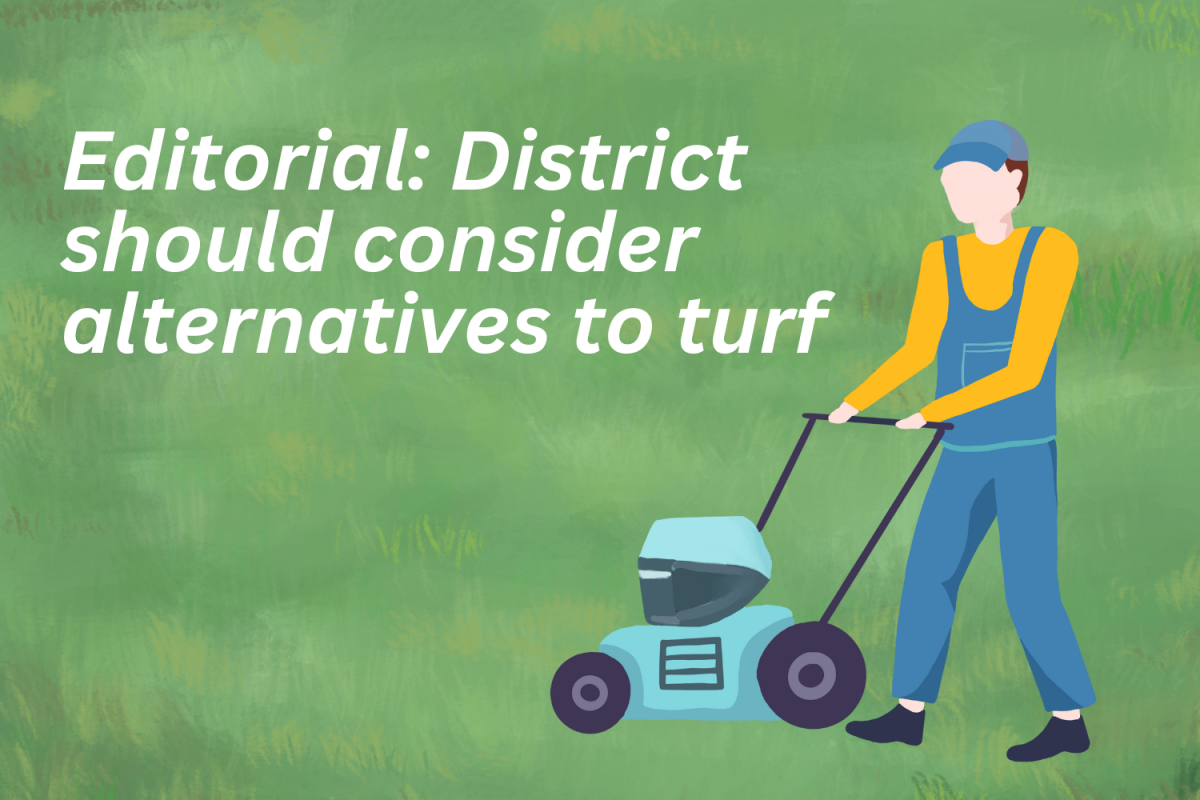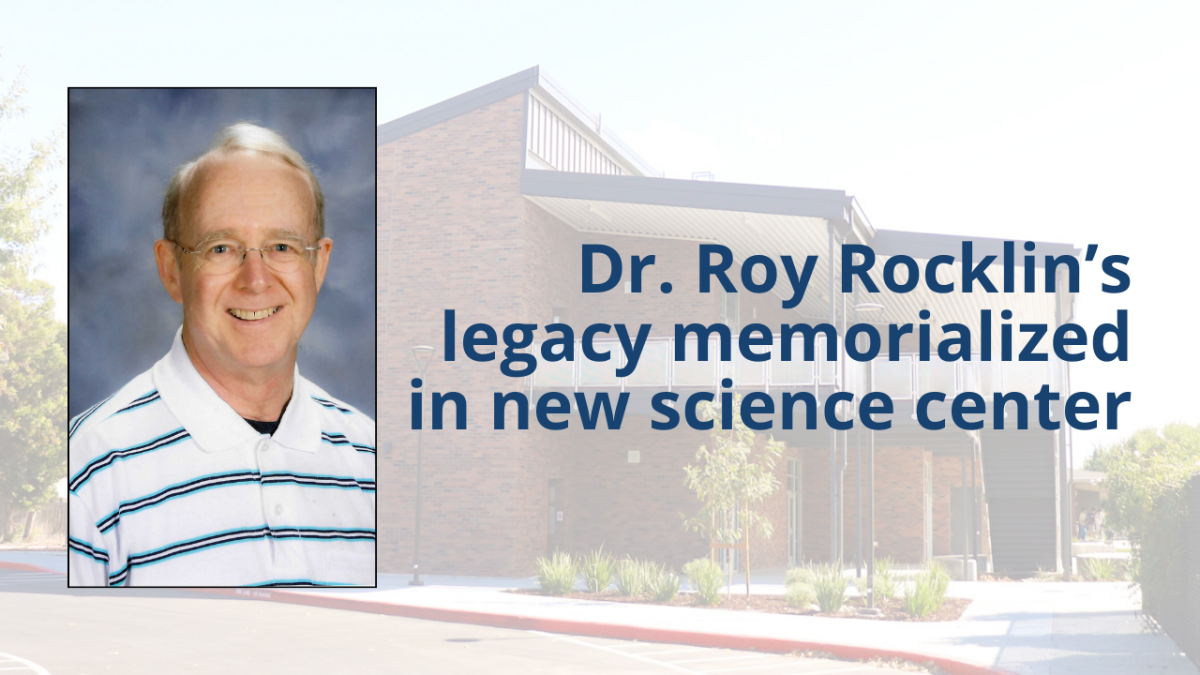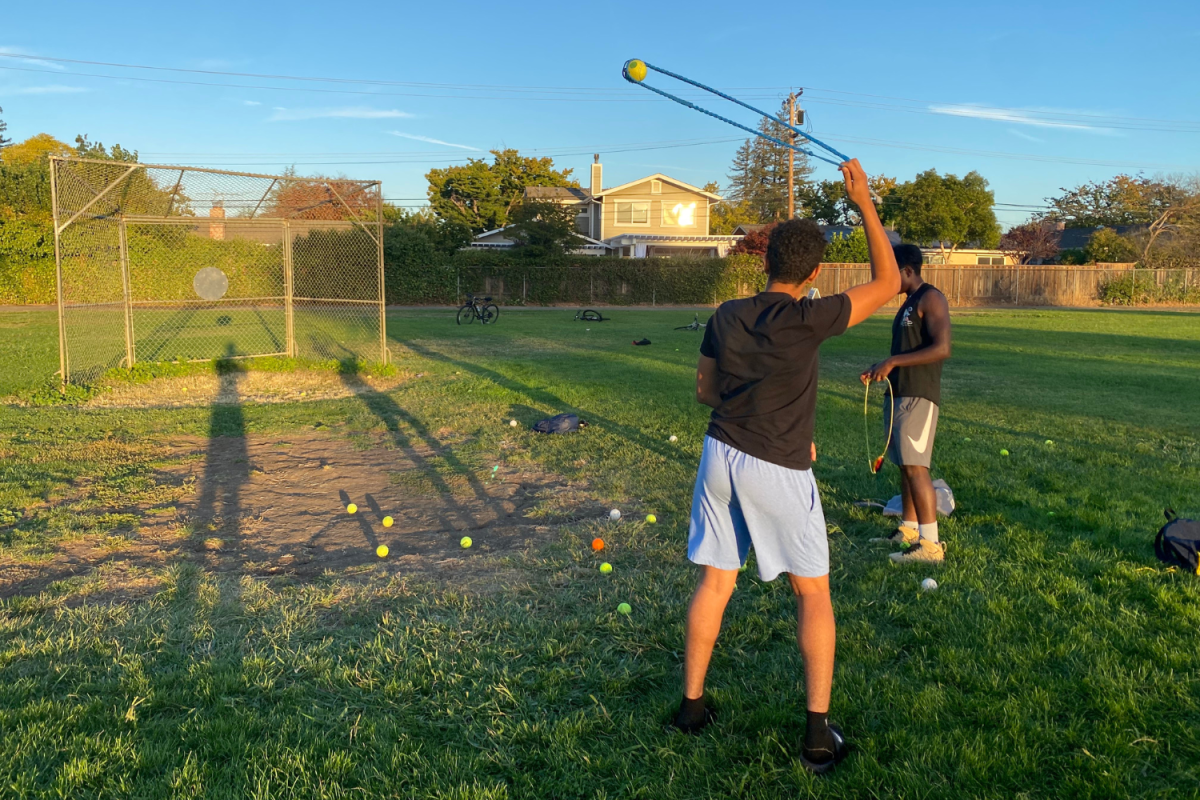At Lynbrook, both the stadium and Stober field are due for renewal. Among the district’s other plans for renovation, replacing turf fields with new artificial turf has raised concerns in the community because of the detrimental effects of chemicals and microplastics found in turf. With the overwhelming number of benefits of alternative natural athletic grasses, student health and the environment will benefit from exploring such alternatives.
On Sept. 12, California Gov. Gavin Newsom vetoed a bill that proposed limitations on the manufacturing of synthetic lawns that contain “forever chemicals.” Polyfluorinated substances, or PFAs, are found in some turfs and released once the rubber absorbs a certain amount of heat. Studies published by the National Cancer Institute on Dec. 30, 2020 reveal that it takes several years of direct exposure for PFAs to possibly lead to different types of cancers. The American Society of Clinical Oncology Post reveals that patients who have had prolonged exposure to PFAs are twice as likely to be diagnosed with cancer. While Newsom was in favor of the objective of the bill, he raised concerns about the effectiveness of implementing such dramatic change. PFAs can also accumulate in the water supply and traces of microparticles can be inhaled and ingested by student athletes when they come in contact with the fields.
Beyond the possible risks of PFAs, synthetic fields also have other downsides, including long-term effects on the ecosystem. Since turf is not recyclable, deteriorated turf will sit in the landfill while a new batch of artificial turf is produced — a process that uses over 600 pounds of water. According to an article published under ScienceDirect in October 2023, turf waste accounts for 15% of the plastic particle abundance in the environment. As turf deteriorates, rubber and plastic particles are released into the environment as well, contributing to microplastic pollution. Typical sports fields contain about 40,000 pounds of turf and 240,000 to 720,000 pounds of black rubber infill. Replacing lawns, natural green surfaces, with turf also lowers the amount of carbon dioxide absorbed by the grass, contributing to global warming. On a smaller scale, turf fields inhibit native species and ecosystems that would thrive in natural grass.
“When you staple plastic grass to the ground with harmful chemicals, these plastics will break down and drift into the soil, stormwater, and oceans,” former FUHSD parent Carrie Levin said. “They’re polluting the water that they think they are saving.”
In recent years, some schools have transitioned to using Bermuda grass, a type of grass specially designed for athletics and suitable for the California climate. Natural grass installers have come up with new formulations of Bermuda grass that use up to 38% less water than other grasses and require much less maintenance. The overall cost is lower in the full lifecycle analysis compared to artificial turf. These grasses also have a longer lifespan than the regular grass students are used to seeing in elementary and middle schools across the CUSD school district. There are Bermuda grasses specific to athletic fields, and there are currently two other models being developed by UC Riverside that will be available very soon. Half of the NFL stadiums use Bermuda grass, and some athletes may prefer this over turf. The Portola Valley School District, CSU Stanislaus, West Valley College and many other schools have already implemented natural grass fields.
Options like these aren’t common knowledge and therefore tend to be overlooked. The disadvantages of grass are disproportionately emphasized in many cases because Bermuda grasses aren’t part of the discussion. Newer formulations of organically managed grass also include pesticide treatments that are nontoxic.
On April 24, Lynbrook was awarded the Green Ribbon Award for various factors such as improvements to electrical units and the installation of turf fields, actions seen as contributions towards environmental sustainability. However, the information about long-term health and environmental issues has only recently come to light, which should prompt reexamination of the district’s green goals.
On the surface, installing turf saves water, but the 15 artificial turf fields at FUHSD contribute to global warming in indirect ways.
Many school districts such as FUHSD believe that natural grass uses too much water, maintenance and money to keep it in prime shape, but extensive research on the amount of water it takes to produce the turf shows that it outweighs the amount of water needed to grow grass.
At Lynbrook, many student athletes prefer turf because of its consistent condition in varying weather conditions. If grass can be well-maintained, it can reduce factors like turf burn and chances of injuries such as ankle fractures. In another sense, real grass fields tend to have pits and bumps left from previous games and created during usage. These pits cause severe injuries when players trip over them — from ankle injuries to severe scrapes on the skin.
“Bumpy and patchy grass fields sometimes make you trip and fall, but the grass is really good to play on when it’s kept well,” sophomore soccer player Tishneet Chhabra said.
Both options of grass have their respective disadvantages: inconsistency in the texture of natural grass can cause safety hazards during irregular weather, while turf is more likely to cause an ankle fracture because the pressure on the field will be absorbed by the athlete’s foot.
“What I believe is both turf and natural grass have pros and cons, natural grass is better only if really well maintained, but turf is consistent in its playability,” sophomore marching band member Anish Gupta said.
Wet grass fields can pose logistical complications and safety hazards, while hard falls on turf could be more harmful to players in terms of concussions and fracturing ankles.
“I think the school’s top priority should be the health and safety of its students,” field hockey player Mahi Shah said. “I believe that it should be an urgent responsibility to upgrade our fields to minimize the amount of toxic chemicals entering our athletes’ bodies, and at the very least, disclose these dangers to our athletes.”
When it comes to factors that can rapidly impact our environment and our community, it is crucial to understand the pros and cons of each option before making any decisions.
“Educate yourself about artificial turf,” Levin said. “Is it safe? Is it good for the environment? Is it best for the globe?”
the Epic voted 31-3 in favor of this stance with 5 abstaining.
The originally published version of this article incorrectly stated that the FUHSD Board of Trustees will be discussing plans for renewing artificial turf fields in their meeting on Nov. 7. This discussion will not be on their meeting agenda on Nov. 7, but will likely be on the agenda sometime in early spring of 2024, according to Superintendent Graham Clark. For those who are interested, in getting a more accurate time frame, please look at the FUHSD Board Meeeting Portal.








































































